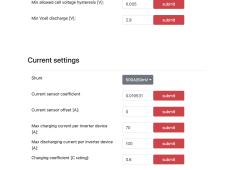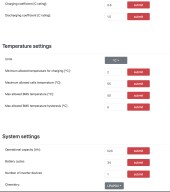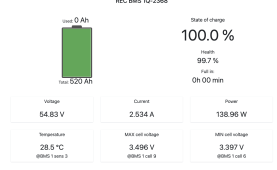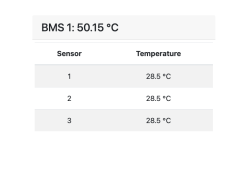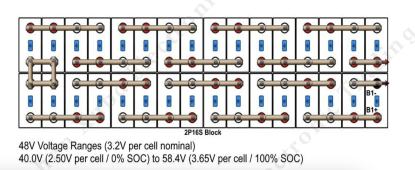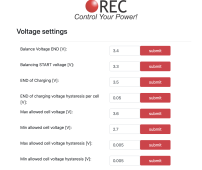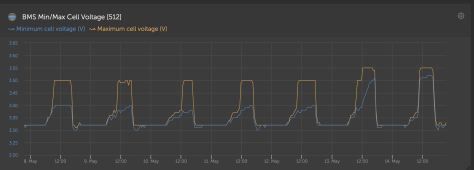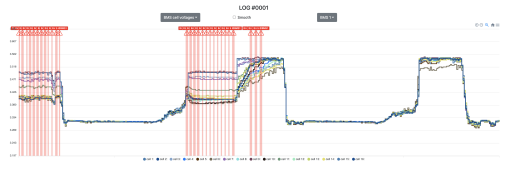Sunnytheskoolie
New Member
- Joined
- Feb 12, 2021
- Messages
- 54
Hi,
I'm not sure what is going on with my battery/BMS. I have a 32 cell pack, EVE 3.2 280ah, with a REC Q1 BMS.
When the battery is drained past about 60% SOC the next day as the pack is charged back up everything is great, the cells charge at an even rate and the BMS doesn't need to work at balancing the pack. If the pack is discharged to anything above about 60% SOC the cells have large voltage differences and the BMS heats up and cools down to balance the pack. You can see in the photo that I only had this happen once in the last 30 days, every other day the BMS had to work to balance those cells.
Any suggestions on what I should start with?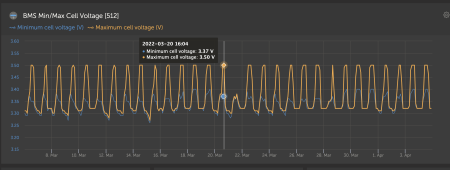
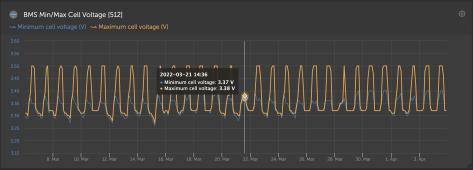
I'm not sure what is going on with my battery/BMS. I have a 32 cell pack, EVE 3.2 280ah, with a REC Q1 BMS.
When the battery is drained past about 60% SOC the next day as the pack is charged back up everything is great, the cells charge at an even rate and the BMS doesn't need to work at balancing the pack. If the pack is discharged to anything above about 60% SOC the cells have large voltage differences and the BMS heats up and cools down to balance the pack. You can see in the photo that I only had this happen once in the last 30 days, every other day the BMS had to work to balance those cells.
Any suggestions on what I should start with?





